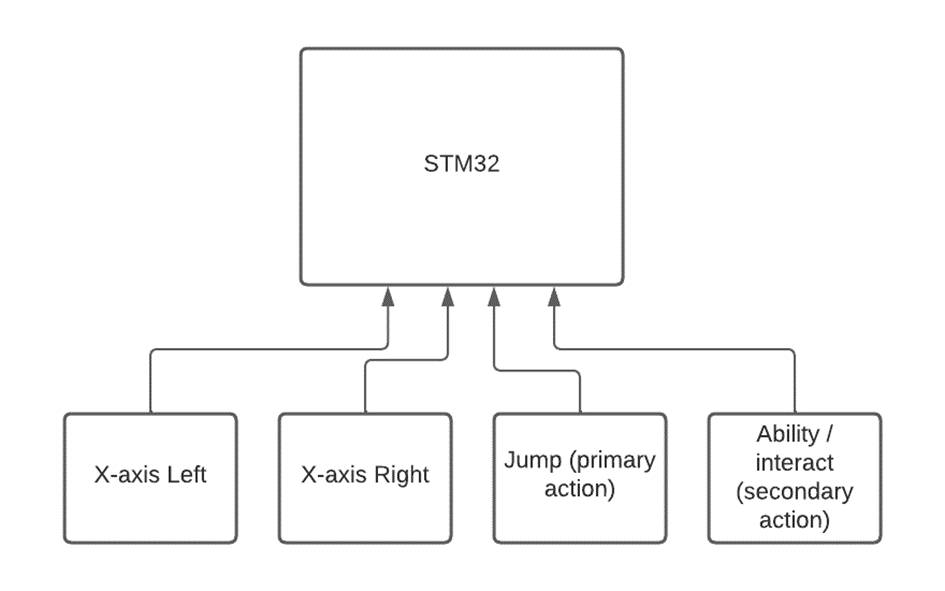diff options
| author | lonkaars <loek@pipeframe.xyz> | 2023-02-15 21:05:41 +0100 |
|---|---|---|
| committer | lonkaars <loek@pipeframe.xyz> | 2023-02-15 21:05:41 +0100 |
| commit | c2071c621b4146ff7c6f918e86728237c9ff7c44 (patch) | |
| tree | bd501622b43b0cdb82466ac1842d846411379d39 /docs/architecture.md | |
| parent | d1202576430b8faaee54e9ce4ab08f7fff408aae (diff) | |
merge #10 + proofread
Diffstat (limited to 'docs/architecture.md')
| -rw-r--r-- | docs/architecture.md | 19 |
1 files changed, 10 insertions, 9 deletions
diff --git a/docs/architecture.md b/docs/architecture.md index 1ae4198..4ebc674 100644 --- a/docs/architecture.md +++ b/docs/architecture.md @@ -11,18 +11,23 @@ Important notes: # Game controllers ## Input + The playable character has 4 actions that it can perform: -- movement on the x-axis (left / right) + +- horizontal movement +- aiming - jump - ability / use -To perform these action there will be 4 buttons for the user to use. + +To perform these action there will be 6 buttons for the user to use. A joystick is not needed for the movement because the movement is not complex, so button fulfill this. The layout will be as follows: - + ## Input handling: + The hardware consist out of a microcontroller and a FPGA. The microcontroller will process the game logic. For this reason the input will be handled by the microcontroller as this will improve playability (stated in research). @@ -35,11 +40,12 @@ The STM32 will be used and most STM32 boards have enough I/O pins for our needs. The STM32 F030 and F091 provided by Avans both have 15 digital pins and 6 analog pins. The buttons will be connected as follows: - + To implement the input in the game, the input should be checked at the start of each game cycle. In this case there are no interrupts needed. # STM32 software + The game engine will be designed to support 2D games. The engine will use a state machine to manage game states and transitions between them. The state machine will be implemented using a finite state machine (FSM) design pattern. The engine will also include support for handling user input, game logic, and sound. FSM is a useful tool for managing game states and transitions. A game can have many different states, such as a title screen, a level selection screen, a loading screen, and various gameplay states. Each state represents a particular configuration of the game, with different sets of variables, objects, and logic @@ -51,8 +57,6 @@ The state machine will be designed with the following states: 4. Game Play: The game play state will be responsible for running the game logic and updating the game state. 5. Game Over: The game over state will display the game over screen and wait for user input to restart the game or return to the title screen. - - # PPU Here's a list of features our PPU has: @@ -256,9 +260,6 @@ Important notes: --> -[nesppuspecs]: https://www.copetti.org/writings/consoles/nes/ -[nesppudocs]: https://www.nesdev.org/wiki/PPU_programmer_reference -[nesppupinout]: https://www.nesdev.org/wiki/PPU_pinout [custompputimings]: https://docs.google.com/spreadsheets/d/1MU6K4c4PtMR_JXIpc3I0ZJdLZNnoFO7G2P3olCz6LSc # APU |